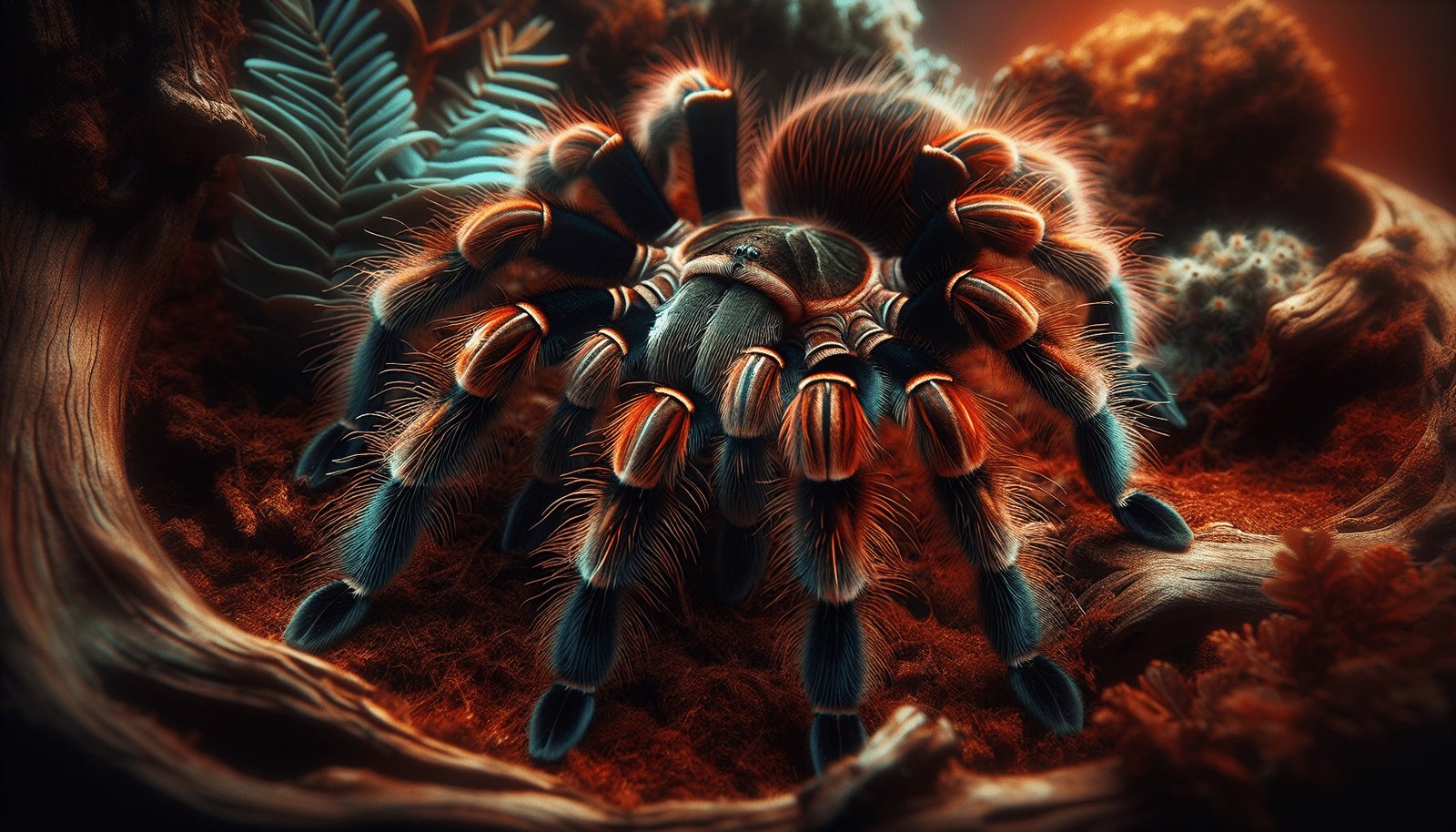Have you ever wondered about the best ways to care for your tarantula and whether UVB lighting could play a role in their habitat? If you’re considering adding a tarantula to your collection or you already have one, it’s crucial to understand their unique needs. This exploration will help you consider if UVB lighting is beneficial for these fascinating creatures or if another form of environmental care might be more suitable.
Understanding Tarantula Habitats
Before delving into UVB lighting, it’s essential to grasp the natural habitat of tarantulas. For you to provide the best environment for your tarantula, it’s helpful to know where they thrive in the wild.
Natural Environment
Tarantulas generally inhabit warm, tropical, or subtropical regions. These include parts of Africa, Asia, South America, and the southern parts of North America. They typically dwell underground in burrows or under logs to avoid predators and extreme temperatures. This subterranean lifestyle considerably influences their interaction with sunlight.
Light Exposure in the Wild
Despite living under or within structures that protect them from the elements, tarantulas do experience some light variations. However, these are typically indirect and not intense, as their burrows naturally filter out much of the sunlight. The question arises—as a tarantula keeper, should you try to mimic this aspect of their natural habitat in captivity?
The Role of UVB Lighting
What is UVB Lighting?
UVB lighting, a subset of the ultraviolet spectrum, is vital for many reptiles and amphibians in captivity. It simulates the effects of natural sunlight, which assists in synthesizing vitamin D3. This vitamin is crucial for calcium absorption, allowing for the development and maintenance of strong bones.
Importance for Reptiles and Other Animals
For creatures such as snakes, turtles, and iguanas, UVB lighting is non-negotiable. These animals need the UVB component of sunlight to metabolize calcium properly because they do not naturally produce vitamin D3. But does this also apply to tarantulas?

Tarantulas and UVB Lighting: The Debate
How Tarantulas Process Light
Unlike reptiles, tarantulas don’t rely on UVB rays for vitamin D synthesis or calcium absorption. Their exoskeleton and the breakdown of prey in their diet provide necessary calcium. The UVB-processing mechanisms seen in reptiles simply don’t exist in tarantulas.
Potential Benefits of UVB for Tarantulas
While tarantulas might not need UVB lighting for physiological reasons, some purport that exposure could benefit their overall mental health. The idea is that a spectrum of light variations could provide a richer experience for the tarantula, prompting behavior that mimics wild conditions.
Risks of UVB Exposure
Too much direct light exposure, particularly UV, might stress tarantulas whose natural behavior includes avoiding intense sun. Over-exposure might lead to changes in behavior or health impacts like dehydration or stress-related conditions.
Setting Up an Ideal Tarantula Enclosure
Should you decide UVB is not essential, or if you wish to try it cautiously, what other elements create a perfect tarantula habitat?
Temperature Control
Tarantulas require consistent temperature ranges, typically between 70-85°F (21-29°C), depending on species. This temperature can often be managed with room heating, but in some cases, a heat mat might be necessary.
| Species | Preferred Temperature Range (°F) |
|---|---|
| Mexican Redknee | 75-80°F |
| Chilean Rose | 70-75°F |
| Cobalt Blue | 75-85°F |
Humidity Levels
Humidity needs also vary by species. The levels should be consistent, as rapid changes can stress the tarantula. Providing a shallow water dish and regular misting helps maintain necessary moisture.
| Species | Optimal Humidity Level (%) |
|---|---|
| Green Bottle Blue | 60-70% |
| Pinktoe | 70-85% |
| Desert Blonde | 40-50% |
Substrate and Hiding Spaces
Tarantulas enjoy digging and hiding, so a deep substrate such as coconut fiber or peat moss offers comfort and mimics their natural burrows. Creating hiding spots with cork bark or rocks can offer additional security.

Light in Tarantula Enclosures
Natural Lighting
If you aim to provide light but want to avoid UVB, indirect natural lighting or LED lights could be effective, offering enough visibility for you without affecting the tarantula’s natural behaviors.
Simulating a Day-Night Cycle
A day-night cycle can be beneficial. A simple timer schedule for lights mimics natural circadian rhythms, helping regulate activity without the harsh effects of UV rays.
Signs Your Tarantula is Thriving (or Not)
To ensure your tarantula is happy and healthy, observe its behavior regularly.
Indicators of Health
- Regular Feeding Behavior: A healthy appetite aligns with regular feeding schedules.
- Active Movement: During their active periods, your tarantula should exhibit curiosity around its enclosure.
- Proper Molting: Successful molting indicates physical health and growth.
Signs of Stress or Illness
- Hiding Excessively or Not at All: Could indicate discomfort with temperature, lighting, or other environmental conditions.
- Loss of Appetite: Could signal stress, impending molt, or illness.
- Erratic Movement: May reveal stress from temperature and light fluctuations or other habitat issues.

The Verdict on UVB Lighting
After thoroughly examining the compatibility between UVB lighting and tarantulas, it seems unnecessary for their care. Their natural habitat and biological needs don’t align with those dependent on UVB for health and vitality. However, this doesn’t mean it can’t ever be used cautiously for specific habitat enrichment, especially if other factors are carefully controlled.
Conclusion
Your tarantula relies on you to create a suitable living environment that mimics the basic elements of their natural world, minus the unnecessary components like UVB lighting. Careful attention to temperature, humidity, substrate, and lighting that promotes comfort without stress can ensure your tarantula thrives. Keeping an eye on your tarantula’s behavior will guide you in maintaining a habitat where they can live happily and healthily. With this knowledge in mind, you can confidently craft the perfect setting for your arachnid companion.
